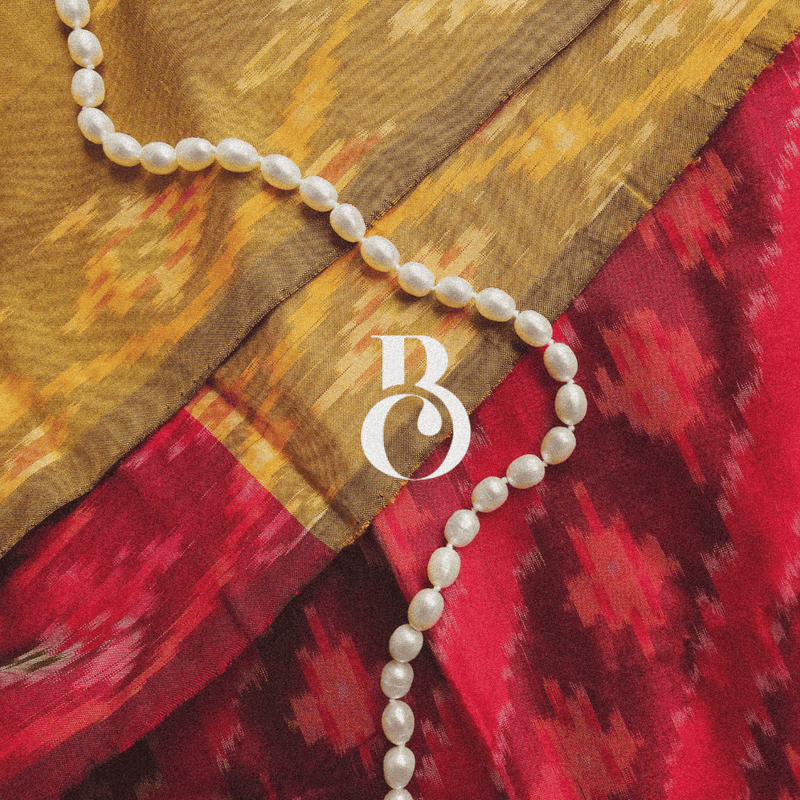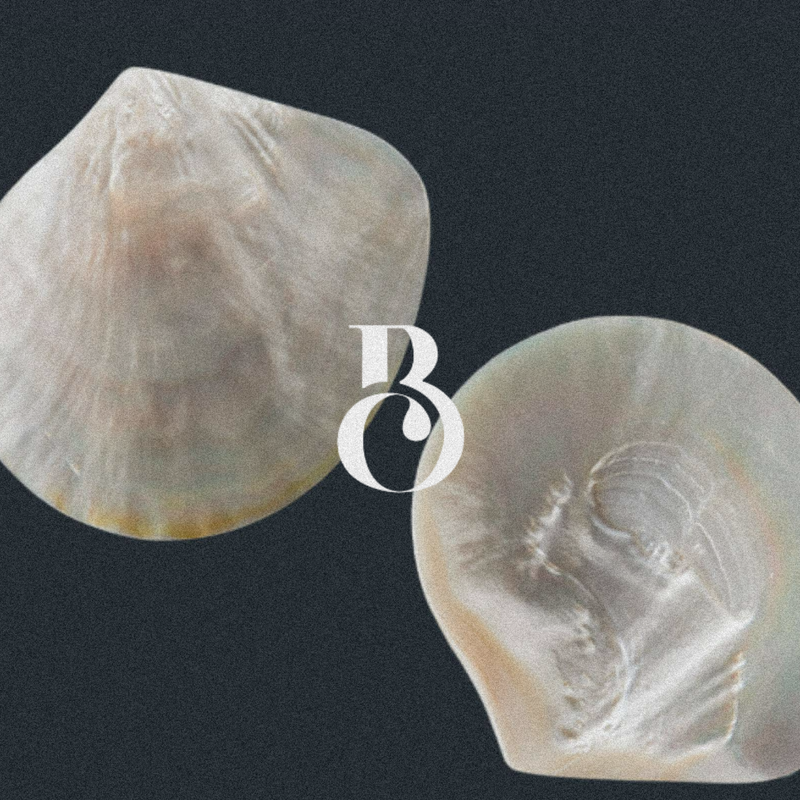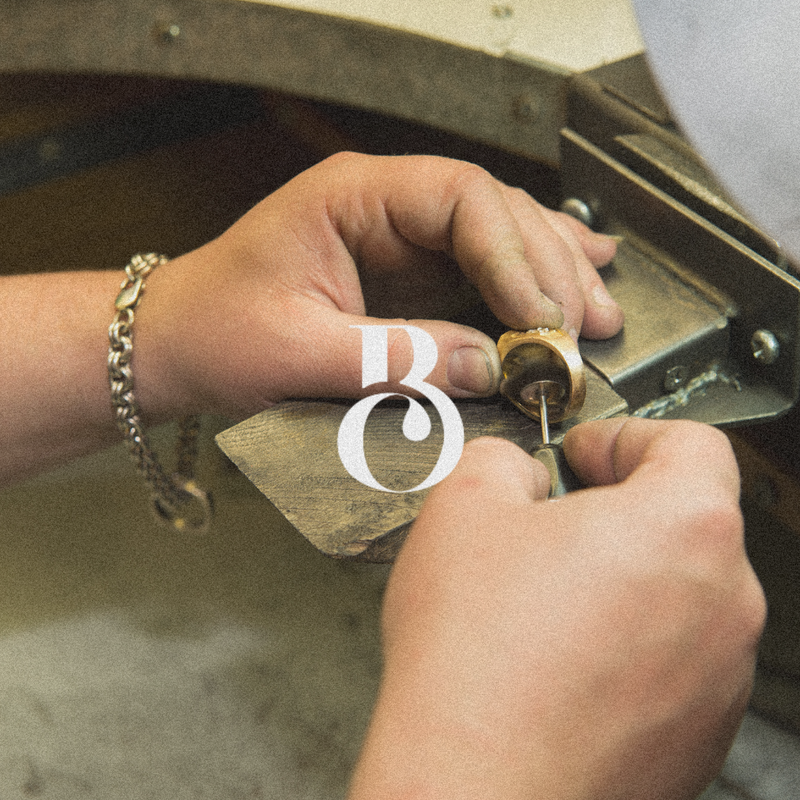

The 'Flor' Pearl Drop Earrings, recycled silver and freshwater pearls
The "queen of gems and the gem of queens..." according to Grace Kelly, Pearls are one of the most fascinating gem stones in the world. Coveted for milennia, pearls are the oldest known gem stones in use in jewellery and the only one to be created entirely by a naturally occurring biological process. From elegant stud earrings to classic strands, Pearls are a timeless choice for jewellery design, suitable for all occasions.
Here, we explore the history and importance of pearls and provide insight into how they are harvested, the different types of pearls and how to care for the ones you add to your jewellery collection.

The History of Pearl Jewellery
Appearing well before the beginning of written history, it's impossible to tell with any certainty who the first people to use pearls were. However, historians have found references to the presence of pearl jewellery as early as 4200 BCE. From the kingdoms of Mesopotamia to the courts of ancient Egypt, pearls have long adorned royalty and nobility, symbolising wealth, power and authority. In medieval Europe, pearls came to be attributed to Christ and the Virgin Mary, symbolising chastity and purity,
The Renaissance era witnessed the flourishing of artistic expression in all its forms, and pearls emerged as a highly popular motif in jewellery design with their associated themes becoming increasingly secular. The graceful portraits and sumptuous garments of the era immortalised pearls as symbols of elegance, sophistication, and refinement.

In the Roaring Twenties, as society broke free from the constraints of the Victorian era, pearl jewellery experienced a revolution. The flappers of the 1920s embraced long strands of pearls, draped with abandon, challenging established norms and embracing a new era of liberation and empowerment.
In recent decades, pearls have experienced another major revival in popularity, moving away from aged traditional associations with 'dainty' and 'demure'. Jewellery designers have sought to reinvent pearl jewellery, integrating them into innovative, bold, and unconventional contemporary designs.
What Are Pearls?
Pearls are formed inside mollusks such as oysters and mussels, which produce pearls as a natural defence against irritants, such as sand grains or parasite eggs that may enter their shells. This process leads to the formation of a smooth, lustrous, and iridescent surface known as nacre, which gives pearls their unique and stunning shimmer.

Pearls can be found in freshwater and saltwater environments globally. The most notable areas of pearl production are the oceans near Australia, the Philippines, Indonesia, and Japan. Additionally, freshwater pearls are found in rivers and lakes in many parts of the world. The various geological regions produce different types of pearls, which offer diverse colours, sizes, and shapes.
How are Pearls Harvested?
Today, most pearls are cultured, a process that involves introducing a small irritant such as a bead or mantle tissue into the mollusc to stimulate the formation of a pearl. Cultured pearls can be harvested after roughly two to four years, which allows farmers to raise high-quality pearls that are more uniform in shape, size, and colour.

Natural Vs Cultured Pearls, What's the Difference?
Natural pearls occur randomly and sporadically in nature taking up to six years to form, and hence are very expensive due to their extreme rarity. Before the process for culting pearls was invented, pearls were in fact rarer than diamonds.
Natural pearls are now typically sold at auction as antiques. Today, most pearls on the market are cultured pearls, which have the exact same qualities as natural pearls but are produced in controlled environments, allowing farmers to choose the desired shape, size, and colour. Cultured whole pearls fall into four major categories:

- Akoya Pearls: These gems are mostly produced in Japan and China and are known for their perfect round shapes, high lustre, and pastel colours, making them an ideal choice for elegant and timeless jewellery.
- South Sea Pearls: These are harvested from the waters of Australia, Indonesia, and the Philippines and are known for their impressive size, unique and inherent golden hue, and breathtaking lustre, making them a must-have for luxury jewellery.
- Tahitian Pearls: Produced in the lagoons of French Polynesia. Unlike the conventional white or cream-coloured pearls, Tahitian pearls are known for their darker hues, which range from black to silvery grey and green.
- Freshwater Pearls: produced in rivers, lakes, and ponds, using freshwater mussels. Freshwater pearls come in a vast range of natural colours, shapes, and sizes, making them incredibly versatile and allowing jewellery makers endless design options. The culturing method used to create freshwater pearls means that perfectly round freshwater pearls are rare, this makes each pearl entirely one-of-a-kind. Additionally Freshwater pearls are typically more durable in nature making them best suited for everyday wear.

Taking Care of Freshwater Pearl Jewellery
Freshwater pearls are unique, durable and wear well, that’s why we chose them to feature heavily in the ‘A Luz’ collection.
When cared for properly, your Bèlis freshwater pearls will keep their original colour and sheen for decades. Follow these guidelines for the longest-lasting and happiest freshwater pearls:
- Store pearls in a separate pouch or box, away from other jewellery, to avoid scratches and damage.
- Use a soft damp cloth to clean them gently and avoid harsh chemicals or abrasive cleaning agents.
- Try to remove pearl jewellery before swimming or heavy exercise to avoid contact with water or sweat.
- However, wear them often to keep them from drying out. Pearls react well to the natural oils of your skin.

Pearls are cherished gems that have intrigued both fashion lovers and gemologists for centuries. As they make a resurgence in contemporary fashion, pearls in our debut, 'A Luz' collection blend classic style with modern trends for a timeless feel.
All Pearls used in the 'A Luz' collection are sustainably harvested before hand crafting in Gondomar, Portugal. Shop our full collection of freshwater and mother of pearl jewellery today.







0 comments